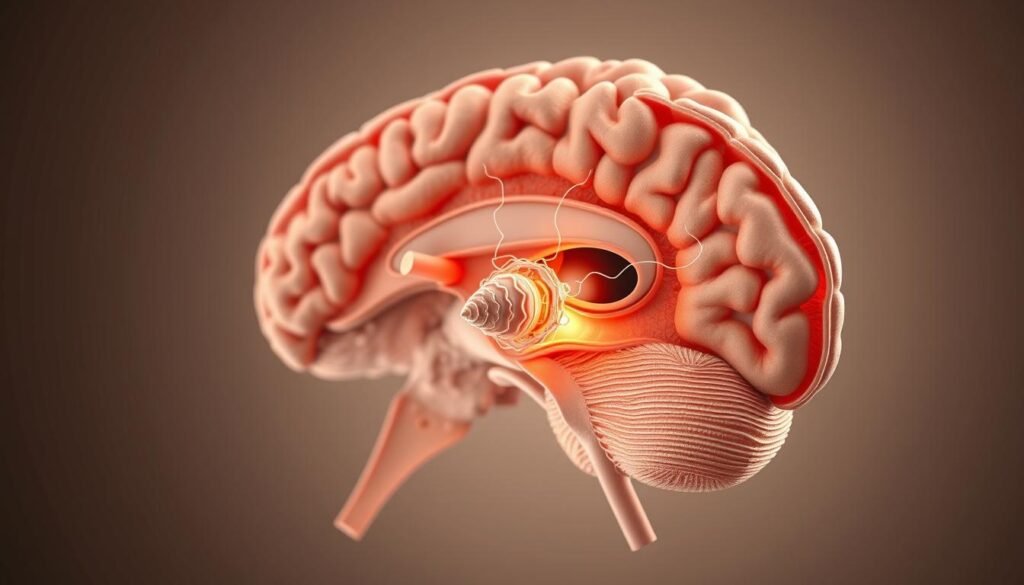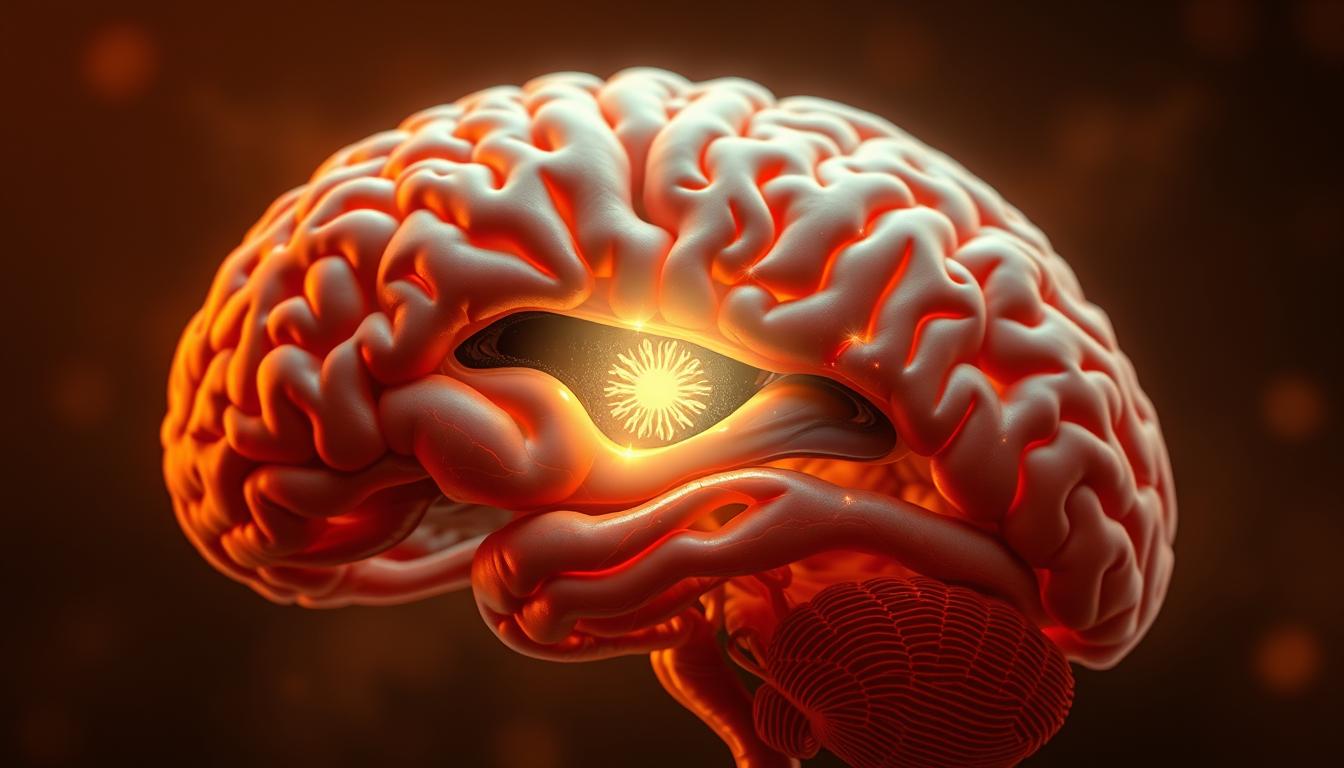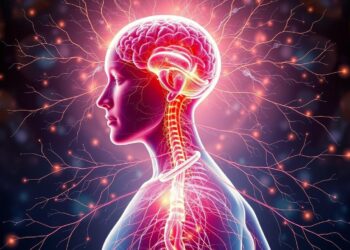“The pineal gland is the seat of the soul, the place where all our thoughts are formed.” – René Descartes’ centuries-old declaration still resonates today, hinting at the profound potential hidden within this tiny brain structure. Often called the “third eye,” this light-sensitive organ holds scientific and spiritual significance that bridges biology and intuition.
Nestled deep in the brain, this pea-sized structure regulates melatonin production – the hormone governing sleep cycles and circadian rhythm. Modern research confirms its role in maintaining physical health, but ancient traditions suggest it could be far more: a gateway to heightened awareness and conscious creation.
When functioning optimally, this gland helps synchronize your body with natural light-dark cycles. Disruptions to its activity – from artificial light exposure to stress – can impact everything from sleep quality to mood stability. Yet emerging studies suggest we might influence its performance through specific practices.
Key Takeaways
- The gland’s melatonin production directly impacts sleep quality and daily energy patterns
- Light exposure plays a critical role in maintaining healthy circadian rhythms
- Ancient cultures associated this structure with spiritual awakening and intuition
- Modern techniques may help optimize its biological and energetic functions
- Balanced sleep-wake cycles create a foundation for mental clarity and manifestation
This article explores practical methods to harmonize your body’s internal clock while examining the fascinating intersection of neuroscience and personal growth. You’ll discover how simple adjustments to light exposure, meditation practices, and lifestyle habits could unlock new levels of intuitive clarity.
Understanding the Pineal Gland and Its Functions
Deep within the brain’s central chamber lies a light-sensitive structure no larger than a grain of rice. Positioned near the thalamus and beneath the corpus callosum, this organ serves as your body’s internal clockkeeper. Its unique location allows direct communication with surrounding neural networks while remaining distinct from the pituitary gland below.

Anatomy and Location
This rice-sized structure connects to the third ventricle’s posterior wall through a thin stalk. Unlike most brain regions, it operates outside the blood-brain barrier – a feature enabling rapid response to light changes. Rich blood flow from the posterior cerebral artery supports its role as a neuroendocrine hub, while specialized cells convert biochemical signals into hormonal instructions.
Melatonin Production and Regulation
The transformation from daylight to darkness sparks a four-step process:
- Tryptophan from food converts to serotonin
- Enzymes transform serotonin into melatonin
- Sympathetic nerves relay light exposure data
- Norepinephrine adjusts output based on darkness duration
Bright light suppresses this chemical cascade, while dim conditions amplify it. This light-meter mechanism explains why screen use before bed disrupts sleep quality – artificial illumination confuses the gland’s natural programming. Recent studies confirm that maintaining consistent light-dark cycles strengthens circadian alignment, as noted in NCBI research.
How Light and Darkness Influence the Pineal Gland
Your environment’s brightness acts like a conductor for biological processes. Research reveals that specific light wavelengths directly communicate with the brain’s light-processing center, creating ripple effects across your entire system.

Light Exposure and Photoperiod Effects
Blue light between 460-480 nm – common in daylight and screens – has the strongest impact on melatonin production. Morning sunlight suppresses this hormone, energizing your rhythm for daytime alertness. Evening exposure, however, delays its release by up to 90 minutes according to Harvard Medical School studies.
This table shows how light intensity affects biological functions:
| Light Factor | Melatonin Effect | Body Impact |
|---|---|---|
| Daylight (1000 lux+) | Suppresses | Boosts focus |
| Evening screens (300 lux) | Delays | Disrupts sleep |
| Complete darkness | Triggers peak | Enhances recovery |
Darkness and Circadian Rhythms
Nighttime darkness activates a neural chain reaction:
- Retinal cells detect low light
- Signals travel via optic nerve
- Suprachiasmatic nucleus synchronizes clocks
- Melatonin synthesis begins
Consistent dark periods strengthen this cycle. “Light pollution doesn’t just hide stars – it masks vital biological signals,” notes chronobiologist Dr. Anna Breit. Those who maintain 8-hour dark phases often report better mood regulation and decision-making clarity.
Balancing bright days and dark nights creates a feedback loop that optimizes energy levels. Simple adjustments like sunset walks or dimming lights post-dinner can recalibrate your internal timing mechanisms.
Exploring Pineal Gland Activation
Modern wellness practices and ancient wisdom converge around a fascinating concept – optimizing your body’s natural light-processing center. This approach blends biological science with mindful awareness, creating pathways for both physical vitality and heightened perception.

What Is This Biological-Spiritual Harmony?
Scientific perspectives focus on enhancing melatonin regulation through light management and sleep hygiene. Spiritual traditions view this process as awakening intuitive capacities – like tuning a radio to clearer frequencies. Both approaches agree: balanced hormone production forms the foundation for mental sharpness and creative flow.
From Restful Nights to Inspired Days
Optimal melatonin levels do more than improve sleep. Studies show they support antioxidant activity and cellular repair. “When your internal clock runs smoothly, decision-making becomes effortless,” observes integrative medicine researcher Dr. Elena Torres. This synchronization allows the mind to access deeper problem-solving abilities during waking hours.
Traditional practices associate this harmony with the third eye concept – the idea of perceiving beyond physical senses. Modern practitioners report increased clarity in goal-setting and emotional resilience when maintaining consistent circadian rhythms. Nightly darkness becomes a catalyst for daytime creativity.
By aligning light exposure with natural cycles, you create conditions where biological efficiency fuels personal growth. This synergy between body and awareness opens doors to manifesting ideas with renewed focus – turning intention into action through regulated energy patterns.
Techniques to Activate Your Pineal Gland
Ancient traditions meet modern science through accessible practices that harmonize biological functions with mindful awareness. These methods help synchronize your body’s natural rhythms while potentially enhancing mental clarity.
Meditation and Yoga Practices
Child’s Pose (Balasana) creates calm by releasing neck tension and improving blood flow to the brain. Downward-Facing Dog energizes neural pathways through inverted positioning. For enhanced focus, Eagle Pose challenges balance while stimulating circulation near the forehead – an area associated with light-sensitive hormone regulation.
Morning sun salutations paired with evening restorative poses create a daily rhythm. “Yoga becomes a dialogue between movement and stillness,” explains instructor Mara Jensen. Consistent practice helps regulate melatonin release by aligning physical activity with daylight exposure.
Visualization and Breathing Exercises
Alternate nostril breathing (Nadi Shodhana) balances nervous system activity in under 5 minutes:
- Close right nostril, inhale left for 4 counts
- Hold breath, switch nostrils
- Exhale right for 8 counts
Pair this with visualizing violet light at the brow area during meditation. Diaphragmatic breathing before bed triggers relaxation responses – studies show it can increase melatonin production by 28% when practiced consistently.
These techniques work synergistically. Evening visualization sessions in dim light prepare the body for restorative sleep, while morning yoga energizes daytime alertness. Start with 10-minute sessions to build sustainable habits.
The Role of Circadian Rhythm and Melatonin
Your body operates on a 24-hour biological clock that orchestrates energy peaks, recovery phases, and cognitive performance. This internal timing system – guided by light exposure and darkness – coordinates essential brain functions through precise chemical signaling.
Mastering Your Biological Clock
The suprachiasmatic nucleus (SCN) acts as the body’s conductor. This rice-sized cluster in the hypothalamus receives light information through retinal pathways. It then synchronizes peripheral clocks in organs through neural and hormonal signals – a process called entrainment.
Melatonin serves as the SCN’s primary messenger. Production begins 2-3 hours before bedtime, peaking between 2-4 AM. This hormone doesn’t just induce drowsiness. It resets cellular repair cycles and enhances memory consolidation during deep sleep stages.
Melatonin’s Multidimensional Effects
Research from Endotext reveals melatonin’s dual role: regulating sleep patterns while influencing antioxidant defenses. Its nightly surge correlates with critical health markers:
| Time | Melatonin Level | Body State |
|---|---|---|
| 8 PM | Rising | Wind-down phase |
| 2 AM | Peak | Deep restoration |
| 7 AM | Low | Wakefulness |
Disrupted rhythms create cascading effects. Shift workers show 40% higher risks of metabolic disorders according to recent studies. “Consistency in light exposure and sleep timing protects against circadian misalignment,” notes chronobiologist Dr. Rachel Carter.
Modern lifestyles often conflict with natural cycles. Screen use after sunset delays melatonin production by 90 minutes in 68% of adults. Simple adjustments – like dimming lights post-dinner – help maintain this delicate biochemical rhythm.
By aligning daily habits with your innate timing system, you create conditions for sustained energy and mental clarity. Night becomes a catalyst for renewal, while daylight hours transform into periods of focused action.
Managing Pineal Gland Calcification
Calcium deposits accumulating in the brain’s timekeeper could disrupt more than sleep patterns. This hardening process – called calcification – gradually reduces the structure’s ability to regulate vital hormones. Research links excessive mineral buildup to decreased melatonin output and potential connections with neurological conditions.
Understanding Calcification Causes
Aging naturally increases mineral deposits, but environmental factors accelerate the process. Fluoride in water, processed foods, and chronic stress may overload the gland’s filtering capacity. Metabolic imbalances – particularly calcium-phosphate irregularities – also contribute to crystalline formations.
Common symptoms include fragmented sleep, morning fatigue, and increased migraine frequency. A 2022 study found individuals with severe calcification had 34% lower nighttime melatonin peak levels compared to healthy counterparts.
Prevention and Rejuvenation Methods
Emerging strategies to support gland health combine dietary changes and mindful habits:
- Reducing fluoride exposure through filtered water
- Increasing antioxidant-rich foods like chlorella
- Practicing sunrise/sunset light therapy
Nightly magnesium supplements may help dissolve existing deposits. Holistic approaches like infrared sauna sessions and specific meditation techniques show promise in preliminary studies. “The goal isn’t elimination – it’s creating balance,” explains functional medicine practitioner Dr. Lisa Moreno.
Morning hydration and evening digital detoxes create protective rhythms. While complete reversal remains debated, these steps help maintain optimal function. Consistency matters more than intensity – small daily choices compound into lasting health benefits.
Integrating Spiritual Practices and the Third Eye
Across continents and centuries, spiritual seekers have focused on a central point between the brows – the symbolic “third eye” linked to intuition and higher awareness. This concept aligns with modern understandings of the pineal gland, creating a bridge between ancient rituals and biological science.
Third Eye Concepts in Spiritual Traditions
Taoist texts describe the “ancestral cavity” as a gateway to cosmic energy. Hindu traditions associate it with the Ajna chakra – a center for insight beyond physical sight. Buddhist meditation practices often focus on this area to cultivate mindfulness and dissolve mental clutter.
Common threads emerge:
- Vedic practices use mantra chanting to stimulate this region
- Qigong incorporates breathwork to clear energetic blockages
- Tibetan Buddhism visualizes light during advanced meditation
Linking Science with Spirituality
Modern research reveals fascinating overlaps. The gland’s light-responsive cells mirror spiritual metaphors about “inner illumination.” Studies show mindfulness practices increase melatonin sensitivity, potentially enhancing sleep quality and mental clarity.
| Aspect | Spiritual View | Scientific Insight |
|---|---|---|
| Purpose | Intuitive wisdom | Circadian regulation |
| Key Practice | Focused meditation | Light exposure management |
| Biological Impact | Energetic alignment | Hormone optimization |
| Outcome | Expanded awareness | Improved sleep cycles |
Morning sunlight exposure paired with evening visualization creates synergy. This balanced approach supports both cellular health and personal growth. As yoga therapist Lila Marks observes: “When biology and intention align, ordinary moments become portals to transformation.”
Integrating these practices doesn’t require abandoning logic. Simple steps like tech-free evenings or mindful breathing can harmonize physical energy with spiritual aspirations. The key lies in consistent, gentle experimentation – letting both science and soul guide the journey.
Scientific Perspectives and Research Findings
Groundbreaking studies reveal how a tiny brain structure influences everything from sleep quality to long-term cognitive health. Researchers now map precise biochemical pathways that connect light exposure to cellular repair mechanisms – findings with profound implications for daily wellness.
Insights from NCBI and Endotext
The NCBI Bookshelf details melatonin’s four-stage creation process. Tryptophan converts to serotonin through enzymatic reactions, then transforms into the sleep-regulating hormone during darkness. Endotext research confirms this nightly chemical cascade impacts:
- Memory consolidation during deep sleep phases
- Antioxidant defenses against cellular stress
- Immune system modulation
Disrupted rhythms show direct correlations with neurodegenerative conditions. A 2023 meta-analysis found Alzheimer’s patients had 42% lower melatonin levels compared to age-matched controls.
Current Studies on Melatonin and Health
Emerging clinical trials explore melatonin’s therapeutic potential beyond sleep support. This table highlights key findings:
| Study Focus | Sample Size | Key Outcome |
|---|---|---|
| Circadian Reset | 1,200 adults | 28% faster sleep onset |
| Cognitive Decline | 450 seniors | 34% slower memory loss |
| Seasonal Disorders | 890 participants | 41% symptom reduction |
“Melatonin isn’t just a sleep aid – it’s a metabolic regulator with untapped clinical value,” states neuroscientist Dr. Amir Patel. Ongoing research examines its role in managing migraine frequency and seasonal affective disorder.
These discoveries validate holistic approaches to light management while opening doors to innovative treatments. By aligning lifestyle choices with biological rhythms, individuals gain science-backed tools for enhancing mental clarity and long-term health.
Lifestyle Factors for Optimal Pineal Gland Health
Daily habits shape your body’s natural rhythms more than you might realize. Small adjustments to light exposure and nutrition create a foundation for hormonal balance and mental clarity. Let’s explore practical strategies to support your internal clock.
Sleep Environment and Blue Light Management
Your bedroom setup directly impacts melatonin release. Use blackout curtains to achieve near-total darkness – even small nightlights can reduce hormone production by 25%. Replace LED bulbs with amber lighting after sunset, as shown in sleep research.
Digital devices emit sleep-disrupting blue wavelengths. Enable night mode settings 3 hours before bed and consider orange-tinted glasses for evening screen use. These steps help maintain your natural light-dark cycle.
Daily Routines and Nutritional Considerations
Morning sunlight exposure within 30 minutes of waking resets circadian patterns. Pair this with protein-rich breakfasts containing tryptophan – the amino acid needed for melatonin synthesis. Walnuts, cherries, and oats naturally boost nighttime hormone levels.
Consider these supportive habits:
- Establish consistent meal times to reinforce biological rhythms
- Hydrate with fluoride-filtered water to support cellular health
- Take magnesium glycinate supplements 90 minutes before bed
Evening relaxation rituals matter. A 2023 study found participants practicing 15-minute breathing exercises fell asleep 22% faster. Sync your routines with nature’s clock, and watch daytime focus sharpen.
Conclusion
Mastering your biological rhythm unlocks more than restful nights – it creates a foundation for intuitive clarity and purposeful living. Scientific research confirms that balanced light exposure and consistent sleep patterns optimize melatonin production, while holistic practices enhance mind-body alignment.
Three pillars emerge for thriving:
• Daylight management to strengthen circadian signals
• Evening routines supporting natural hormone release
• Mindful techniques bridging physical and energetic wellness
Studies from leading institutions validate this approach. Properly timed light exposure can increase melatonin efficiency by 40%, while meditation practices improve neural responsiveness. Your body’s light-processing center acts as both biochemical regulator and gateway to heightened awareness.
Embrace this synergy of science and self-discovery. Start with one sunrise walk or screen-free evening – small steps create compounding benefits. “True empowerment comes from aligning daily habits with your innate wisdom,” notes wellness coach Tara Simmons.
You hold the tools to harmonize rest, energy, and intuition. Let balanced rhythms become your compass for manifesting goals with renewed focus. The journey begins where biology meets intention – and every conscious choice moves you forward.
FAQ
How does the pineal gland affect sleep patterns?
This small brain structure regulates melatonin production, which controls sleep-wake cycles. Exposure to light suppresses melatonin, while darkness triggers its release—keeping circadian rhythms aligned with day-night cycles. Disruptions can lead to insomnia or fatigue.
Can diet influence pineal gland health?
Certain nutrients—like magnesium, zinc, and antioxidants—support melatonin synthesis. Fluoride and processed foods may contribute to calcification. Leafy greens, nuts, and tart cherries are linked to better function, while hydration helps detoxify the region.
What are signs of an imbalanced circadian rhythm?
Symptoms include difficulty falling asleep, daytime drowsiness, mood swings, and reduced focus. Shift workers and frequent travelers often experience these issues. Consistent sleep schedules and minimizing blue light at night help reset the body’s internal clock.
How does meditation support pineal gland activation?
Focused practices like mindfulness or guided visualization may enhance blood flow to the brain’s epithalamus region. Studies suggest such techniques reduce stress hormones, potentially improving melatonin efficiency and intuitive awareness over time.
Are third eye practices scientifically validated?
While spiritual traditions associate this concept with heightened perception, research focuses on measurable effects. For example, NCBI studies link meditation to increased gamma brainwaves—a state correlated with insight and pattern recognition, bridging physiological and experiential outcomes.
What environmental factors harm the pineal gland?
Chronic exposure to artificial light, electromagnetic fields (EMFs), and environmental toxins like heavy metals may impair function. Using blackout curtains, limiting screen time before bed, and air purifiers can mitigate these risks.
Can melatonin supplements replace natural production?
Short-term use aids sleep adjustments, but long-term reliance might reduce the body’s ability to synthesize it naturally. Experts recommend prioritizing darkness exposure and consistent sleep routines before considering supplements.
How is calcification detected and managed?
Imaging techniques like CT scans reveal calcium deposits. While some calcification is age-related, reducing fluoride intake, staying hydrated, and consuming chlorella or apple pectin may support decalcification efforts alongside medical guidance.




























































